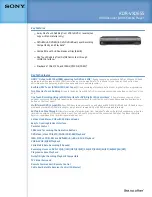
100/180 mm PAPERLESS GRAPHIC RECORDER: USER GUIDE
HA028910
Issue 13 Sep 16
User Guide
Page 118
4.3.11 FUNCTION (Cont.)
ROLLING AVERAGE
This calculates the average value of the last R samples of a channel, taken at N second intervals, where R
and N can be defi ned by the user. At initiation, up to the time of the fi rst sample reading, the displayed
value is the average of the channel sampled every iteration (i.e. at 8 Hz.).
The number of readings over which the average can be taken is limited by the amount of free RAM
instantaneously available, and is thus dependent on the overall confi guration of the recorder. An instru-
ment alarm is generated if there is insuffi cient free RAM available - see
section 3.1.3
for details.
Figure 4.3.11f Rolling average menu
MEAN KINETIC TEMPERATURE (MKT)
MKT is defi ned as ‘the isothermal temperature that corresponds to the kinetic effects of time-tempera-
ture distribution’. The recorder calculates MKT, using the equation below:
Function
Rolling Average
Average of
Number of samples
10
Sample Interval
Channel 1
Maths Number
4) Math 4
Value
OFF
Reset now
60
s
T
k
!
"&
H
R
ln
e
"&
H
RT
1max
#
e
"&
H
RT
1min
#
...
#
e
"&
H
RT
Nmax
#
e
"&
H
RT
Nmax
2N
'(
)(
*(
*(
*(
+(
,(
-(
-(
-(
where: T
k
= The required mean kinetic temperature in Kelvins
&
H = The heat of activation
R = The universal gas constant
T
1max
= The highest temperature reached during the fi rst measurement period (in Kelvins)
T
1min
= The lowest temperature reached during the fi rst measurement period (in Kelvins)
T
Nmax
= The highest temperature reached during the Nth measurement period (in Kelvins)
T
Nmin
= The lowest temperature reached during the Nth measurement period (in Kelvins)
N = The total number of measurement periods
As described in ‘Confi gurable items, below, this is simplifi ed for the recorder user , to four entries viz:
The number of the channel measuring temperature, the number of samples to be used, the time between
the samples and the relevant ‘Heat of Activation’.
Note: The input temperature must be in Kelvins. This can be achieved either by setting the rel-
evant channel’s units to Kelvins, or by using a further maths channel to convert the measuring units
to Kelvins.
(K = ˚C + 273.15 or K = 0.555(˚F -32) + 273.15).
















































